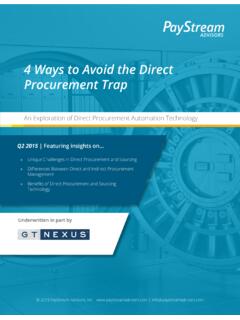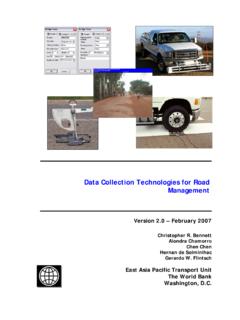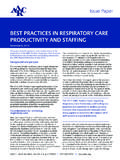Transcription of Principles of Supply Chain Management
1 Ten Classics from Supply Chain Management Review 3 David L. Anderson, Frank F. Britt, and Donavon J. Favre When this article was published, David L. Anderson and Donavon J. Favre were consultants in Andersen Consulting s Strategic Services Logistics Practice. Frank F. Britt, an alumnus of that practice, was Vice President of Marketing and Merchandising at Streamline Inc. The most requested article in the 10-year history of Supply Chain Management Review was one that appeared in our very first issue in the spring of 1997. Written by experts from the respected Logistics practice of Andersen Consulting (now Accenture), The Seven Principles of Supply Chain Management , layed out a clear and compelling case for excellence in Supply Chain Management . The insights provided here remain remarkably fresh ten years later. Managers increasingly fi nd themselves assigned the role of the rope in a very real tug of war pulled one way by customers mounting demands and the opposite way by the company s need for growth and profi tability.
2 Many have discovered that they can keep the rope from snapping and, in fact, achieve profi table growth by treating Supply Chain Management as a strategic savvy managers recognize two important things. First, they think about the Supply Chain as a whole all the links involved in managing the fl ow of products, services, and infor-mation from their suppliers suppliers to their customers cus-tomers (that is, channel customers, such as distributors and retailers). Second, they pursue tangible outcomes focused on revenue growth, asset utilization, and the traditional view of a company and its compo-nent parts as distinct functional entities, these managers realize that the real measure of success is how well activities coordi-nate across the Supply Chain to create value for customers, while increasing the profi tability of every link in the Chain .
3 Our analysis of initiatives to improve Supply Chain Management by more than 100 manufacturers, distributors, and retailers shows many making great progress, while others fail dismally. The suc-cessful initiatives that have contributed to profi table growth share several themes. They are typically broad efforts, combining both strategic and tactical change. They also refl ect a holistic approach, viewing the Supply Chain from end to end and orchestrating efforts so that the whole improvement achieved in revenue, costs, and asset utilization is greater than the sum of its parts. 0000101010101010101000100101001001010101 00 1010101010101010100101010000101010101010 101001010101001000100 ANNIVERSARY ISSUE The Best of Supply Chain Management Review7 Principles of Supply Chain ManagementTheVISION EXECUTION PROGRESS FUNDAMENTALS TECHNOLOGY4 Ten Classics from Supply Chain Management Review efforts likewise have a consistent profi le.
4 They tend to be functionally defi ned and narrowly focused, and they lack sustaining infrastructure. Uncoordinated change activity erupts in every department and function and puts the company in grave danger of dying the death of a thousand initiatives. The source of failure is seldom Management s dif-fi culty identifying what needs fi xing. The issue is determining how to develop and execute a Supply Chain transformation plan that can move multiple, complex operating entities (both internal and external) in the same direction. To help managers decide how to proceed, we revisited the Supply Chain initiatives undertaken by the most successful manufacturers and distilled from their experience seven fun-damental Principles of Supply Chain Management . Principle 1: Segment customers based on the ser-vice needs of distinct groups and adapt the Supply Chain to serve these segments profi tably.
5 Segmentation has traditionally grouped customers by industry, product, or trade channel and then taken a one-size-fi ts-all approach to serving them, averaging costs and profi t-ability within and across segments. The typical result, as one manager admits: We don t fully understand the relative value customers place on our service offerings. But segmenting customers by their particular needs equips a company to develop a portfolio of services tailored to various segments. Surveys, interviews, and industry research have been the traditional tools for defi ning key segmentation criteria. Viewed from the classic perspective, this needs-based segmentation may produce some odd couples. For the manu-facturer in Exhibit 1, innovators include an industrial dis-tributor (Grainger), a do-it-yourself retailer (Home Depot), and a mass merchant (Wal-Mart).
6 Research also can establish the services valued by all customers versus those valued only by certain segments. Then the company should apply a disciplined, cross-func-tional process to develop a menu of Supply Chain programs and create segment-specifi c service packages that combine basic services for everyone with the services from the menu that will have the greatest appeal to particular segments. This does not mean tailoring for the sake of tailoring. The goal is to fi nd the degree of segmentation and variation needed to maximize profi tability. All the segments in Exhibit 1, for example, value consistent delivery. But those in the lower left quadrant have little inter-est in the advanced Supply Chain Management programs, such as customized packaging and advance shipment notifi cation, that appeal greatly to those in the upper right quadrant.
7 Of course, customer needs and preferences do not tell the whole story. The service packages must turn a profi t, and many companies lack adequate fi nancial understanding of their customers and their own costs to gauge likely profi t-ability. We don t know which customers are most profi table to serve, which will generate the highest long-term profi tabil-ity, or which we are most likely to retain, confessed a lead-ing industrial manufacturer. This knowledge is essential to correctly matching accounts with service packages which translates into revenues enhanced through some combina-tion of increases in volume and/or price. Only by understanding their costs at the activity level and using that understanding to strengthen fi scal control can companies profi tably deliver value to customers.
8 One suc-cessful food manufacturer aggressively marketed vendor-managed inventory to all customer segments and boosted sales. But subsequent activity-based cost analysis found that one segment actually lost nine cents a case on an operating margin basis. Most companies have a signifi cant untapped opportuni-ty to better align their investment in a particular customer relationship with the return that customer generates. To do so, companies must analyze the profi tability of segments, plus the costs and benefi ts of alternate service packages, to ensure a reasonable return on their investment and the most profi table allocation of resources. To strike and sustain the appropriate balance between service and profi tability, most companies will need to set priorities sequencing the rollout of tailored programs to capitalize on existing capabilities and maximize customer impact.
9 Principle 2: Customize the logistics network to the service requirements and profi tability of customer segments. Companies have traditionally taken a monolithic approach to logistics network design in organizing their inventory, ware-house, and transportation activities to meet a single standard. For some, the logistics network has been designed to meet the average service requirements of all customers; for oth-ers, to satisfy the toughest requirements of a single customer segment. EXHIBIT 1 Needs-Based SegmentationSales and Merchandising NeedsOrder Fulfillment RequirementsHighLowLowHighM ChryslerM MaytagM WestinghouseLogistics OptimizersTraditionalistsSource: Andersen ConsultingM Auto ZoneM StaplesDevelopingM GraingerM Home DepotM Wal-MartInnovatorsM Small Retail StoresM Small Industrial Wholesale DistributorsSeven Ten Classics from Supply Chain Management Review 5 Neither approach can achieve superior asset utilization or accommodate the segment-specifi c logistics necessary for excellent Supply Chain Management .
10 In many industries, especially such commodity industries as fi ne paper, tailoring distribution assets to meet individual logistics requirements is a greater source of differentiation for a manufacturer than the actual products, which are largely undifferentiated. One paper company found radically different customer service demands in two key segments large publishers with long lead times and small regional printers needing delivery within 24 hours. To serve both segments well and achieve profi table growth, the manufacturer designed a multi-level logistics network with three full-stocking distribution centers and 46 quick-response cross-docks, stocking only fast-mov-ing items, located near the regional printers. Return on assets and revenues improved substantially thanks to the new inventory deployment strategy, supported by outsourcing of Management of the quick response centers and the transportation activities.










